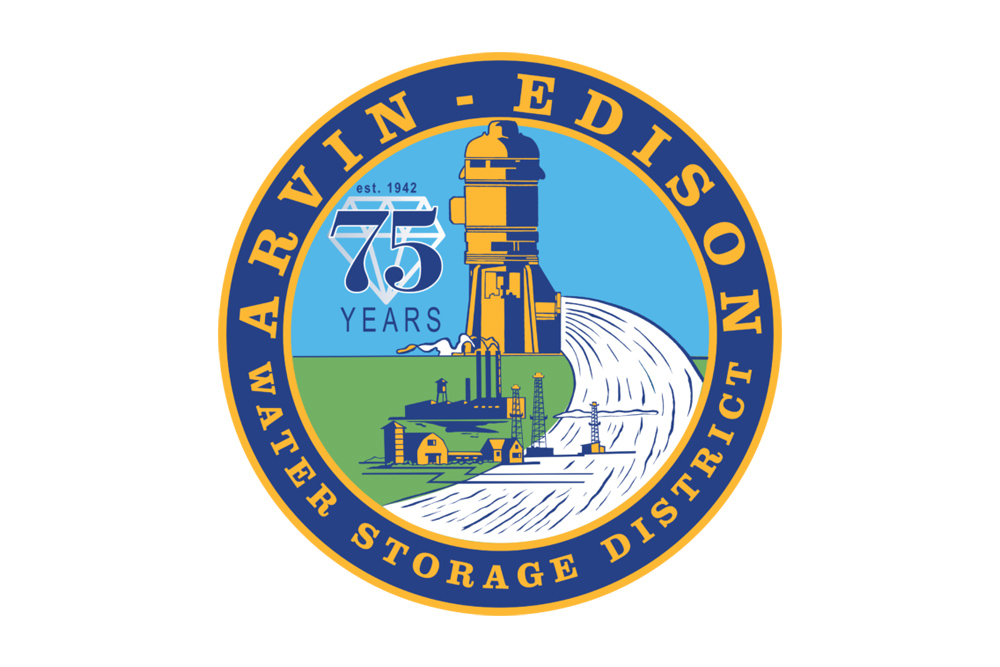This is Part Two of our report on recharge in Westlands Water District: Director Frank Coelho runs Casaca Vineyard. He farms 8,000 acres near Five-Points. He estimates his land is planted 35 percent wine grapes, pistachios, almonds – the rest in tomatoes, garlic and sometimes grain. Coelho’s grandfather came from the Azores Islands and started farming in 1915. His farm has been in the family for 108 years.
Recharging in Westlands or anywhere else for that matter depends on a water supply, the conveyance to get the water to where it needs to go and a suitable destination. The underground soil geology is only part of it – there has to be a level place for water to rest.
Coelho is running two recharge projects, 60 acre ponds. He said it’s very expensive as there is lots of slope to his land. He looked into reverse tile lines but decided to go with contour ponds. He started recharging in April on some flat sandy areas. He tried subsurface row crop drip on tomatoes, but weeds got bad. Coelho said his farm is running a constant 25 cfs and recharging 50 a/f per day. His farming operation is recharging regular contract water.
“We’ve already used up 215 Water so the rest of year is contract,” said Coelho. “We didn’t know what kind of water and how much until April. It costs money to recharge and it depends on our budget. Even Kings River costs $100 per a/f without gravity fed flows. No free water.”
Coelho believes one can always look back and see what could have been done. Westlands and California agriculture in general has gone from one unique situation to another, from drought to flood. Coelho was going to take part of his almonds out of production to save water for other use. He said growers could of done more but they would have had to predict the future to optimize supplies.
“The district makes a big effort to find the best recharge land. There’s been two years without water trying to save carryover for the crunch time. We cleared out rescheduled water from San Luis first then went to 215. Then trued up as much as possible by end of April. The State Water had to empty its SLR carryover first,” said Coelho. “We’re better set for more recharge basins to clear out rescheduled earlier.”
Coelho farms in six Groundwater Sustainability Agencies including Fresno ID/North Kings GSA and McMullin GSA. He believes Westlands has done as much or more than any of the other GSAs.
 “Spreading water after harvest is limited to how much water you can set on the field in preparation for next year. We’ll see, we do have a target for recharge,” said Coelho. “We’re not going to survive on wells, there is a minimum amount of surface water we have to have. We will be very prepared for the next time there’s a wet year.”
“Spreading water after harvest is limited to how much water you can set on the field in preparation for next year. We’ll see, we do have a target for recharge,” said Coelho. “We’re not going to survive on wells, there is a minimum amount of surface water we have to have. We will be very prepared for the next time there’s a wet year.”
Director Justin Diener farms Red Rock Ranch, 2,000 acres of tomatoes, garlic, grain and almonds but primarily row crops. He said his farm is recharging between 18-24 a/f per day, on 350 acres. He may farm grain this winter.
“Many prime recharge areas are best for farming and the amount of water in conveyance capacity is going to farming right now,” said Diener. “Irrigation takes precedence over recharge. The best recharge is to shut off the wells and use surface water.”
Diener said since SGMA was enacted the district has never had an opportunity of this scale as it has had this year. “We’re learning as we go and we’re pretty successful thus far. We started from nothing as we’ve only had access to recharge since March and April,” said Diener. He listed multiple forms of recharge policy; one – private grower, the two district programs where the district pays growers $100 per a/f to take water and recharge it then Westlands gets the recharge credit. And, the district gives the growers free water and the district splits the credits with the grower.
Much of Westland’s prime recharge land is on the western slope of the San Joaquin Valley. Diener said gated pipes are often the best way to apply recharge water and of course the irrigation goal isn’t uniform dispersal. Growers are just opening the system and letting the water flood.
Westlands has been under the gun for not doing enough to facilitate recharge in the district. Diener answers these claims by saying the goal is to recharge 200,000 a/f this year, save 300,000 a/f by using surface supplies and not pumping. He said with an average annual overdraft of 110,000 a/f Westlands is setting itself up to increase its sustainability for the next five years. He said due to abysmal water supply allocations since SGMA was passed accounting methods for tracking recharge in Westlands have never been put into practice before March of this year. That need has created three, new full-time jobs.
Director Kevin Assemi is part of the family that owns Maricopa Orchards. It is estimated Maricopa Orchards farms more than 10,000 acres in Westlands, mostly permanent crops; almonds and pistachios. Assemi has been a leading critic of the district’s lack of preparedness for when a wet winter such as we’ve just experienced hits.
When asked what Westlands lacked in its response he said more temporary diversions and turnouts are needed to convey more surface supplies. He said he and others are working with staff to bring this about on the Delta Mendota and Coalinga Canals for growers. He calls for increasing the carrying capacity within the district. He said better messaging to growers about how to benefit from and when to implement the recharge programs.
“We should have got that information out sooner and have a consistent message,” said Assemi. “Send out free water emails over and over. Identify recharge areas. We should be able to take 3,300 to 4,300 a/f per day recharge and only taking 650 a/f currently.”
How about after harvest when land will be freed up? “There’s already 40,000 fallow acres approved for recharge. Half of that could get a third a/f daily infiltration. That’d be 6,600 a/f per day and that’s the minimum goal in my opinion,” said Assemi. “I don’t think we’re ready yet.”
Assemi said there needs to be better communication from the district to growers.
District Preparation
Gutierrez said a couple of years ago the board instituted a Recharge/Irrigation Equipment Lease program as part of the Expanded Irrigation System Improvement or Recharge Program. Westlands received grant money to seed a low interest loan program for its growers to improve irrigation and recharge equipment. This program acts as a revolving fund and is self-funding. All Westlands growers can participate depending on available funds.
Every landowner in the district can recharge. They can take their allocation, apply to the crops and put the rest to recharge. As with most water banking in California there is a 10-percent leave behind figure – meaning if a grower recharges 10 a/f they’ll get credit for nine acre feet and one acre foot has to stay in the ground. This will build up recharge credits for use in the future when surface supplies are limited.
There is a clay layer that runs underground through the San Joaquin Valley’s westside. It divides the aquifer into upper and lower sections. In general groundwater quality issues are more prevalent in the upper aquifer with total dissolved solids as high as 2,000 parts per million. That is considered brackish and means there is a lot of salt in that water. Over exposure to salt can harm and even kill plants.
However, that TDS figure is site specific with the worst groundwater located in the northern part of the district. Surface supplies from the Delta during wet years run about 300 ppm TDS and in dry years 400 ppm TDS. Supplies from the Kings and San Joaquin Rivers are between 50-75 ppm TDS. Gutierrez calls this sugary sweet water. Most groundwater pumped from the upper aquifer in Westlands takes place south and east of Highway145. North and west of Highway 145 the lower aquifer is pumped due to water quality. Most recharge in Westlands is taking place southwest of Huron outside the clay layer. The district doesn’t own much land in the good recharge areas.
Gutierrez said there were important lessons learned this year. For instance the time it takes to get the necessary federal 215 Water contracts approved to allow allocating water sooner will require starting the process earlier. That also brings a risk of over allocating in a short year. Looking back Gutierrez said it would have been good to start the process at least two weeks sooner. He is expecting increased recharge when harvest ends and believes Westlands growers are going to be more proactive. He’s very aware of the potential for San Luis Reservoir to fill in December and is planning on a good head start this year.
Grower Perspective
Dan Errotabere is grower in Westlands and a former board member. He and his brothers farm Errotabere Ranches, 3,600 acres of almonds tomatoes, garlic and cotton near Five-Points. He said about 25 percent of his crops are permanent. They’ve been recharging using Aquifer Storage & Recovery, where water is injected down a well. Errotabere said this started in April and in addition to ASR they’ve been running water on open fields. He estimates 500 a/f of recharge has taken place so far this year. The recharge taking place on his land has been accomplished without district programs.
“The district is supporting recharge as good as could be reasonably expected,” said Errotabere. “I think the district is exploring more opportunities for the future. Who could prepare for three years of rain in one season? We have learned a lot and there’s always more to learn. The fundamental point is the district recharges for everyone. This is job one for the directors.”
DISCLAIMER OF RESPONSIBILITY; Waterwrights strives to provide clients with the most complete, up-to-date, and accurate information available. Nevertheless, Waterwrights does not serve as a guarantor of the accuracy or completeness of the information provided, and specifically disclaims any and all responsibility for information that is not accurate, up-to-date, or complete. Waterwrights’ clients therefore rely on the accuracy, completeness and timeliness of information from Waterwrights entirely at their own risk. The opinions expressed in this report are those of the author and do not represent any advertisers or third parties.
ALL RIGHTS RESERVED. Copyright 2023 by WaterWrights.net/DAW
Westlands Water District
3130 N. Fresno Street, Fresno CA 93703 Phone:559/224-1523
Board: Jeff Fortune -President, Jim Anderson – Vice President, Frank Coelho Jr., William Bourdeau, Kevin Assemi, Ross Franson, Jeremy Hughes, Ernie Costamagna & Justin Diener.
Staff: Allison Febbo-General Manager, Jose Gutierrez-Lt. General Manager, Jon Rubin-Attorney, Russ Freeman-Deputy GM Resources, Kitty Campbell-Supervisor of Resources, Bobbie Ormonde-VP of Finance & Administrative Affairs, Bill Pierce Director O&M, Jim Carter-IT Guru and Elizabeth Jonasson- Public Affairs Representative.
About: Without irrigation, farming in the Westlands area of California would be limited and ineffectual. The history of Westlands is one of continual adaptation, careful water stewardship and advanced technology. By maintaining a fierce commitment to sustainability, the Westlands’ comprehensive water supply system continues to adapt, educate, and surpass conservation goals. Throughout its history, Westlands Water District has demonstrated a lasting dedication to water conservation and recognized that the long-term survival of its farms depends on the effective management of California’s precious water resources. From www.wwd.ca.gov
SGMA: Westland WD is in the Westside Subbasin and the Westlands WD GSA. DWR #5-022.09

































